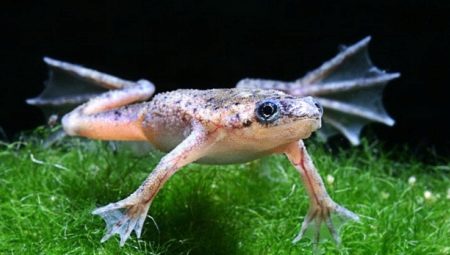A frog in an aquarium today may still surprise someone, but not for everyone such an underwater resident is an exclusive. In almost every pet store where there are aquariums, there is one such tank, packed full of frogs. Of course, not everyone will like this pet, of course, but a certain fashion for domestic frogs has already formed. And if you look closely, they are not so slippery and nasty, frogs can also be loved and even attached with all their souls to these amphibians.
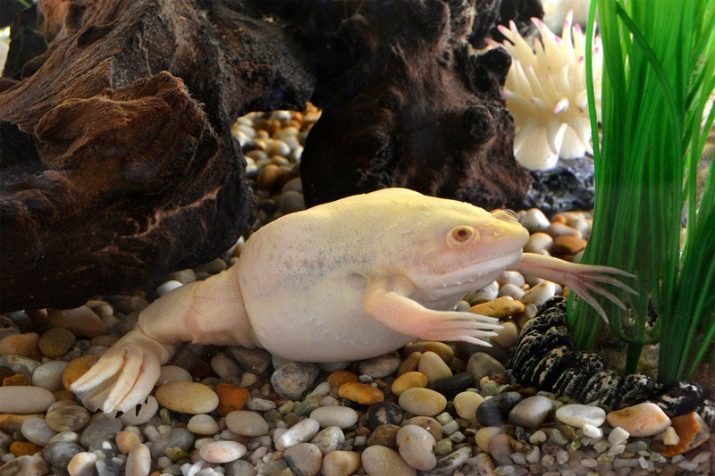
Features
Aquarium frogs are amphibians that can live at home in the same tank with fish. Moreover, they live in an aquarium with a very interesting life, and at the same time delight their owners. It is no less interesting to watch frogs in a small sea kingdom than to fish. And in pet stores they sell not some nasty dirty green individuals, but rather funny ones (in terms of colors) and even cute creatures. The description of frogs alone can delight the aquarist, and now he is sleeping and sees how soon a charming frog settles in his aquarium.
Frogs are interesting in that they gracefully hang in the water column, swim like divers, study their possessions. Residents of the home reservoir do not present special conditions for maintenance, care and nutrition. Some of their species live for a long time in it, during which time even the most fastidious households manage to fall in love with tailless amphibians and become attached to them.
Sometimes underwater residents become home oracles: they are trusted to predict the results of football matches and even presidential elections. Frogs come up with funny nicknames, for example: Semyon Semenych, Zelenka, Square, Zhabkin, Gusha, Nikanor.
With the help of such an aquarium dweller, one can accustom a child to the fact that the world is diverse, the concepts of beauty are multidimensional, and to love all life is a natural quality of a person.

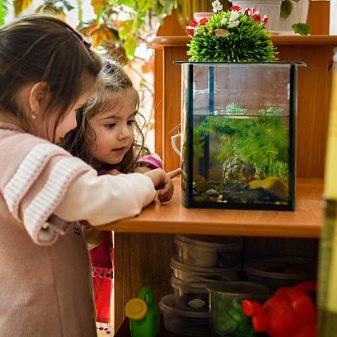
Varieties
One of the most popular domestic species is the Spur frog, and it is precisely albinos (light with a pink tint) that become inhabitants of aquariums in most cases. These are unpretentious amphibians, unless in food they may seem like gourmets. Their body rarely grows more than 8 cm in length.
One individual for conditionally comfortable existence requires 10 liters of water. Water temperature should be around 18–22 ° C. To equip a house for such a resident, you need a filter: without it, you can’t cope with the amount of dirt produced by the frog. Be sure to close the aquarium with a lid or glass with a gap. If you leave the “door” to the tank open, then you will look for your Zelenka or Nikanor throughout the house.
From food, the white Spur frog prefers a small bloodworm, daphnia, and a small earthworm. Kvakush will not refuse a shred of lean meat. The main thing is not to overfeed the pets: these are voracious creatures, they do not follow diets, but obesity threatens them. An adult frog needs to be fed twice a week, while growing amphibians eat more often - 4-5 times a week. It is interesting that the aquarium inhabitants hold food with their paws, quickly sort them out, push the tidbit to their mouth.
Of the minuses of the Spur frog, there can be noted an attempt on small fish. Neons or guppies will certainly become the prey of an amphibian, if you decide to make them neighbors. And the Spur frogs - the real ones were dirty: they are crap, as well as they dig up the ground wreckingly. Plants also tear and break.
And they do it out of harm, Shportsov’s indifferent to plant foods.
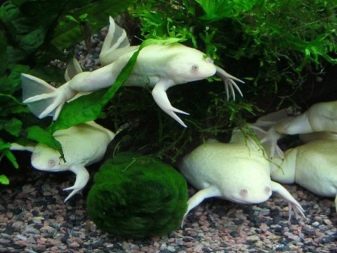

Among amphibians there are several popular species.
- Hymenochirus. Miniature frogs, on average, grow up to 4 cm. They are more slender frogs than spur ones: they have thin legs, not such a rounded body, and the muzzle is pointed. They can live comfortably even in a 5-liter can. Animals are thermophilic, do not tolerate frequent changes of water.
They hardly get used to fixed food, because by nature they are predators. They are also lovers of digging up the soil and raising the entire litter to the surface of the water; these amphibians cannot be called cleanlings.
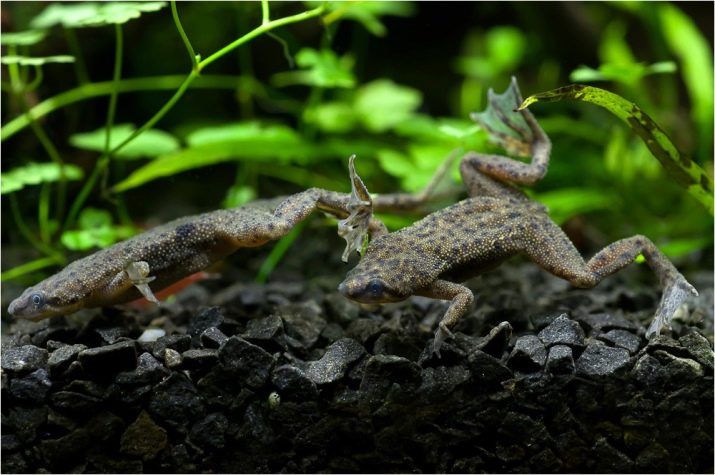
- Yellow (yellow-bellied) and red-bellied toads. These frogs are distinguished by the fact that they have a catchy color and are poisonous. For humans, the poison they secrete is not dangerous, but you still have to wash your hands after talking with them. Easily tamed and even predict the weather. These frogs can be called dwarf: their length does not exceed 70 mm.
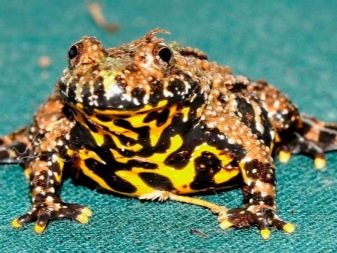
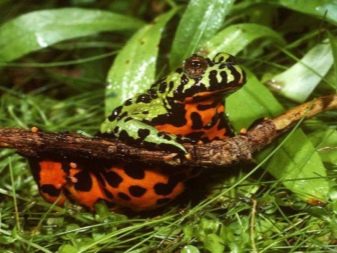
Decorative frogs can really decorate an aquarium. But for very clean owners who are not ready to put up with the shortcomings of frogs, the very fact of acquiring such inhabitants is unacceptable.
Real amateur zoologists will want to make frogs at home in order to study them (and not just know the names), keep observation diaries, take care of them.
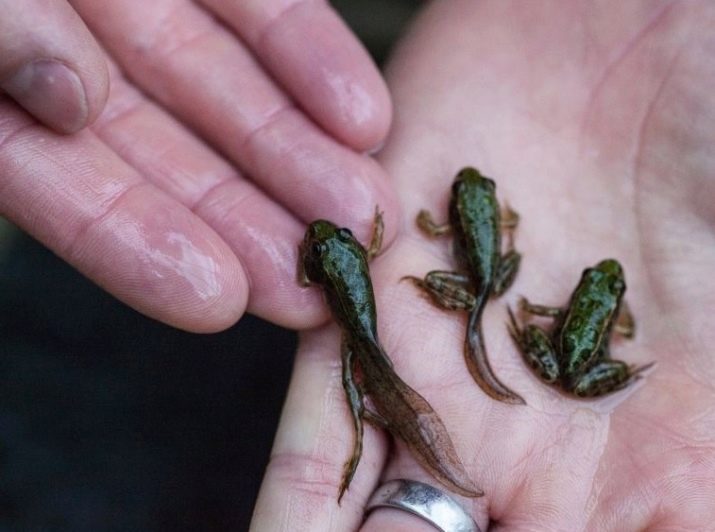
Compatibility
Frogs can live with fish, but what this neighborhood will be like is a big question. Even if it does without sacrifices, the inhabitants may not be comfortable with each other. Different conditions, water requirements, temperature indicators, feed affect the quality of the neighborhood.
There is a family of aquarium fish that can live together with frogs. These are labyrinth fishes: gourami, xenopomies, laliuses, macropods, and also males. Almost all of the above fish live in Asian rice fields. The fields are not sufficiently enriched with oxygen, the water on them is polluted and stagnant. Because the labyrinth fish got used to breathing atmospheric air, "old water" is quite suitable for them.
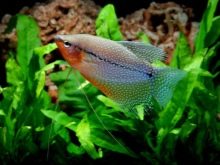

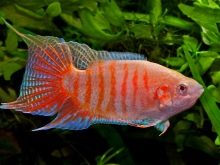
But zoologists advise aquarists not to experiment with the neighborhood. For example, they recommend keeping the spur frog alone. The Spur frog swallows all the people he meets, he plots the plants necessary for the fish, and he moves all the carefully set decorations. The only positive moment of the neighborhood is the beneficial effect of mucus secreted by the skin of frogs on diseased fish.
Hymenochiruses are more friendly, they may well get along with calm fish, medium-sized and non-predatory.
But if you place the hymenochirus in a large capacity, then watching it will not be very interesting. These frogs are in shelters for a long time and the frog hiding in a large tank needs to be found.
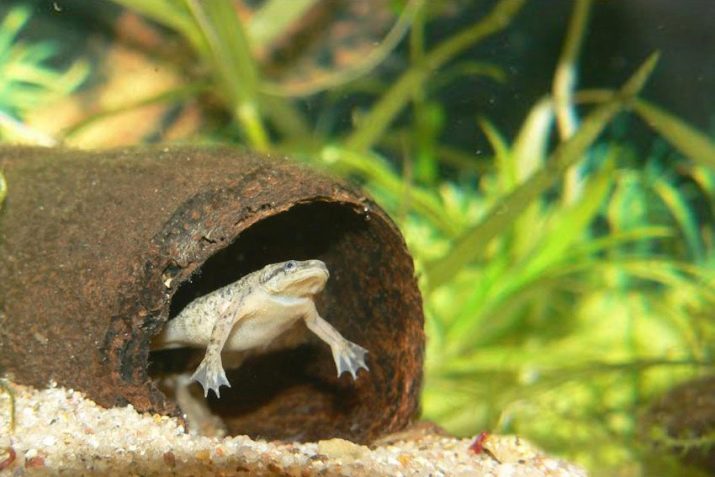
Growing conditions
To say that aquarium frogs are cute creatures is difficult. Fish are more clean and less aggressive than amphibians. But wildlife lovers, ready to organize mini-ecosystems at home, prefer to plant frogs instead of silent fish (or with them). Out of a great love of zoology, you can join the ranks of the owners of such unusual pets and look after them.
Interestingly, the Spur frog, ready to become your pet, is the first vertebrate to be cloned. And another curious fact: about 100 years ago, the Spur frog was used as a pregnancy test. If you give her an injection of urine pregnant, she, under the influence of hCG, will begin to spawn.
Because of frogs are interesting zoological objects, many people treat amphibians not like living aquarium toys. They are serious about keeping amphibians, taking care of them, and observing them. And they carefully study all the available information in order to allow the underwater inhabitant to live a completely comfortable and happy aquarium life.
Aquarium Requirements
If you take a couple of large frogs for maintenance, then the approximate volume of the aquarium should be about 100 liters The tank needs good filtration and poor aeration. The toads will live in the aquaterrarium - a special device. A couple of adult toads should expect a reservoir of at least 5 liters.
Shportsev enough for 10-20 liters for two. In the aquarium, there must certainly be enough shelter, because this species «secular» prefers retreat to lifestyle.
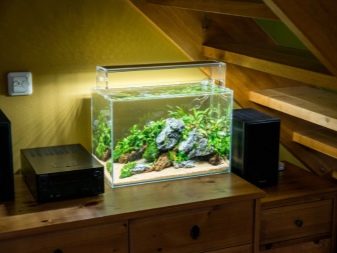
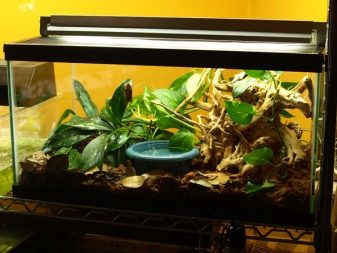
Water
The basis of competent preparation is liquid settling for 3 days, this reduces the amount of chlorine in it. Amphibians are unpretentious to the level of acidity and water hardness. Experienced aquarists advise not to pour it when changing the water in the tank. Settled and sedimented water is suitable for filling a fish tank. Water temperature is quite high – from 22 to 28 ° C for different types of amphibians.
Priming
As a soil for popular species of aquarium inhabitants, large pebbles will be required. For American peeps, fine gravel is also suitable. Toads like sand and pure gravel, spur prefer pebbles.
Plants
Plants, if present in the aquarium, can only be hard-leaved. They can be planted strictly in pots, otherwise the frogs will quickly begin excavation. Well, if the plants form whole thickets in the water house, the frogs will like to hide behind them.
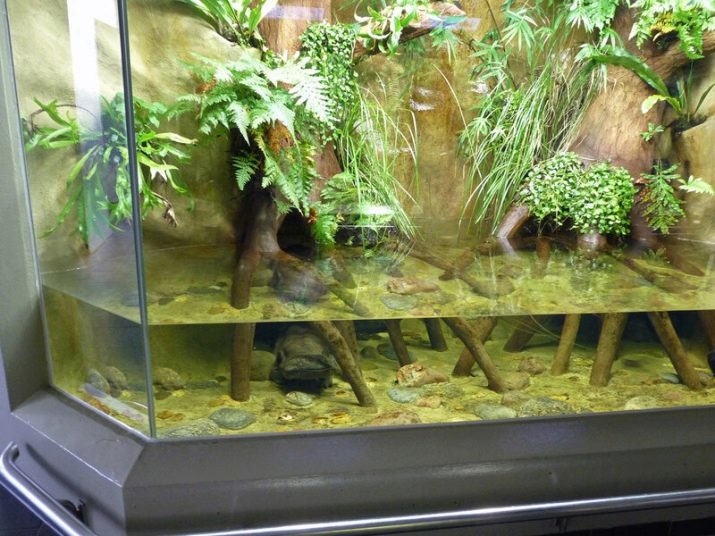
Some aquarists do cunningly: they put near a container where amphibians live, a flowerpot with a plant endowed with hanging shoots. They are placed in water. The tank is landscaped, it becomes designer completed, and the roots of greenery remain unharmed.
It should be noted that frogs, like all living things, are susceptible to disease. Some diagnoses of aquarium amphibians are quite common.
- Nematode infection. Amphibians become gray, rough, their skin is peeling. They lose weight very quickly, and with a scraping made from the skin, it is real to notice millimeter worms.
- Fungal ailments. More often, the fungus infects the injured areas of the skin, where a cotton-like plaque is formed, which can move throughout the body.
- Red paw. This is the name of a bacterial infection in which red spots appear on the frog's legs and face.
- Dropsy. Another bacterial infection, in which the amphibian swells like a ball, swells, the body loses its familiar contour.
Treated frogs with means for tropical aquarium fish, choose them according to the causative agent of the disease. If there are several frogs in the tank (or they live with fish), the sick pet will have to be isolated. Frogs with obesity and pets living in uncomfortable conditions are more prone to diseases.
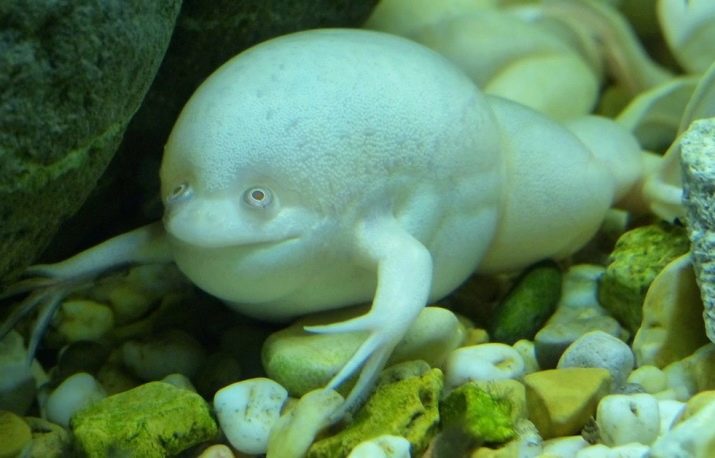
What and how to feed?
Decorative aquarium inhabitants don't like fast food for amphibians: give them live food. Shportsevs eat small earthworms with pleasure (but they can also eat flour worms), and they also feed on crickets, large bloodworms, tadpoles and fry. With tweezers, they happily grab meat pieces, fragments of the liver or shrimp. Categorically it is forbidden to give pork spurs; fatty beef and pipe-makers are also dangerous.
Gimenokhirusy prefer small bloodworms, daphnia or fish. If you choose immovable and dry food for feeding, the frogs will most likely ignore it. It is enough to feed an adult hymenochirus twice a week: do not be afraid, he will not die of hunger. True, because of such a rare schedule, many people completely forget to feed their pets. And such forgetfulness is dangerous.
It is interesting to compare the behavior of representatives of 2 different popular species. The Shportsovs have a well-developed sense of smell and touch. These inhabitants of the underwater state are very sensitive to smells and light movements of water. They can quickly find food and quickly cope with it.
Hymenochiruses are not so agile: they need to bring food literally to their nose.
But it’s interesting that they are accustomed to: a certain signal or a clearly chosen place can be a sign of a fast meal for them. It is worth, for example, to lightly tap the aquarium with tweezers, as they go to the sound. True, these amphibians will get to feed for a long time. And along the way, by the way, they can change their mind. A little lazy, they are not even in a hurry to feast on.

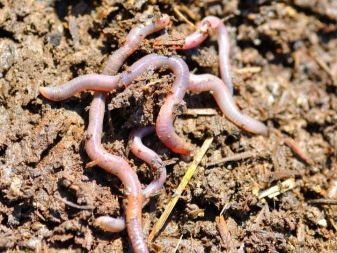
Sexual differences and reproduction
The frog breeding process, which is carried out by specialists, looks interesting. More precisely, in captivity amphibians create comfortable conditions. Amphibians will not breed in the wrong conditions for them. In the period when mating occurs, you need to replace the liquid 2-3 times a week. Make the water a little warmer than usual.
Distinct black stripes will appear on the male’s legs, it will make a sound that means “combat” readiness. The pair must be jailed with the necessary substrate and clean water. And when the caviar is postponed, the couple will go back to the aquarium. In the clutch, from 50 to 200 eggs, the tadpoles that appear from the eggs have a size of not more than 3 mm.
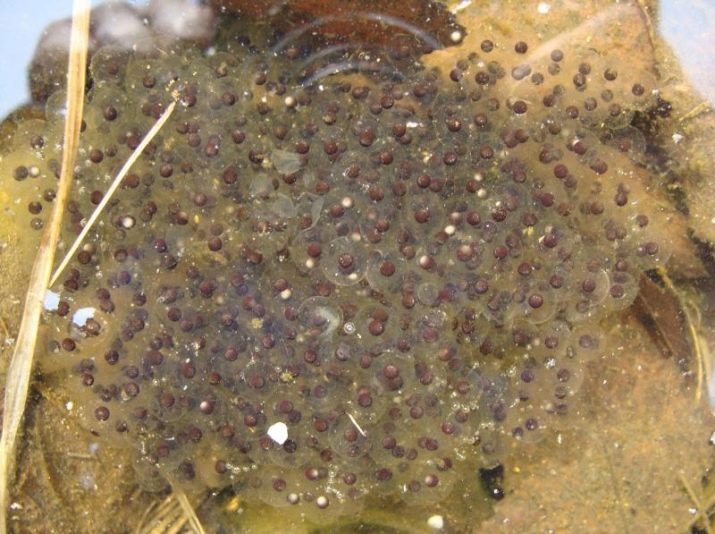
Frog offspring are fed with rotifers and infusoria. Frogs only mature by the end of the first year of life.
To determine their gender, you can use the following instructions.
- Even at the pet store, take a closer look at all the individuals. The body of the female usually expands markedly to the pelvis, and the body of the males is uniform along the entire length. There will be no sharp differences in color.
- Take the amphibian in your hands, turn it on your back: if between the legs there is a tubercle that looks like a tail, this is an ovipositor, only females have it. On it you can distinguish a female from a male.
- You can examine the throat of amphibians. Males have resonators resembling bloating sacs. In some species, they are located on the throat and are called throat resonators, in others - on the head, on the sides. Resonators help them make invocative sounds during the mating season.
- The paws of an amphibian can also be seen. Males will have growths similar to a black brush on them, they stretch right up to the muscular cavity. Or there may be marital calluses on the legs that look like coarse white skin.
But to determine with a 100% guarantee whether it’s male or female is only possible with an expert.In young individuals, sex determination is extremely difficult.
The following video will tell you about the dwarf aquarium frog.
